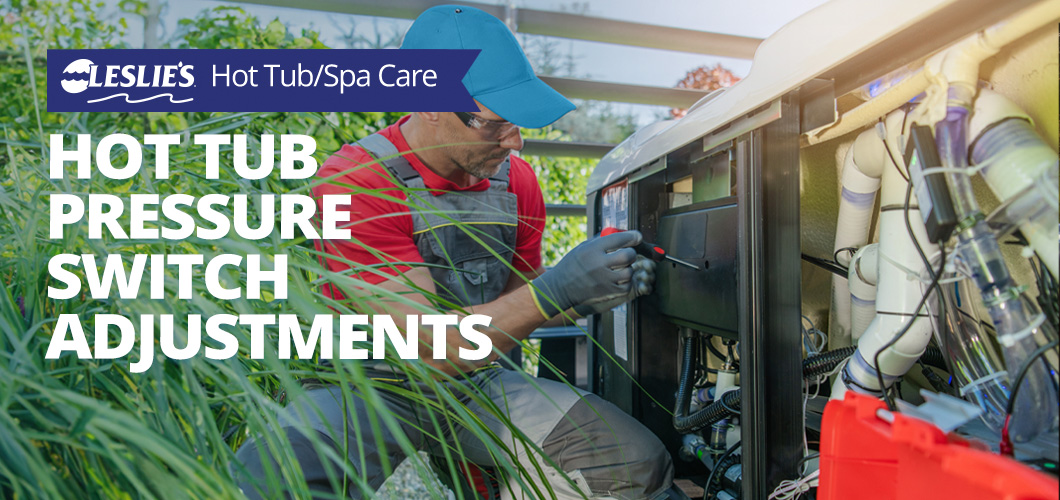
Hot Tub Pressure Switch Adjustments
The pressure switch on a hot tub or spa is a pressure sensor that is mounted onto the heater housing, or very close to the exit point of the heater. It's sole purpose is to shut off the heater if low pressure (low water flow) occurs.
In a hot tub, pressure is an easy way to determine flow rates through the pipes, pump and heater. Some spas also use a flow sensor, in addition to (or instead of) the pressure switch, to be sure water is flowing properly for the heater to operate safely.
If an electric or gas heater is on, but the water is not moving fast enough through the heater, it heats up too much, too fast, which could melt PVC pipes and scald spa users. Although it rarely happens, if a hot tub heater were to run without water moving through it, a massive meltdown or fire will result.
Fortunately, spas and hot tubs are equipped with redundant safety checks - pressure switches to shut the system down when water pressure is low, and flow sensors if water flow is low and high limit sensors that are monitoring temperature.
How to Jump Out the Pressure Switch
For low flow spa error codes, like FL, FLO, FLC, or OH (OverHeat), check the filter, check the pump, and check the valves for something that is obstructing the water flow. Look for a dirty filter, a clogged impeller, closed valve, or a piece of plastic film covering the spa drain. Check the spa skimmer water level is high enough, and the skimmer isn't sucking air. Check underneath for any drips or leaks when the system is off that may indicate an air leak when the system is on.
"Jumping" the pressure switch refers to placing a jumper wire between the two spade terminals or brass screws on the pressure switch. By connecting a wire between the two "in" and "out" terminals, you essentially bypass the switch itself. Note that jumping out a pressure switch should only be done for testing purposes. Do not operate a spa or hot tub with any safety components bypassed.
With the pump running, and the thermostat turned up, high limits reset - in short, everything ready to go, connect the wire or clips to each side or terminal, onto the brass spade connector (where the wires are connected), and within just a few short seconds, the diagnostic checks are done and the heater should turn on, or you should see an indicator light or heating code on the spa side control panel.
Hot Tub Pressure Switch Adjustments
You may have also read on the internet that the pressure switch can be adjusted, and it's true, most of them can - but just because you can doesn't mean you should!
Most pressure switches are factory set for the overall resistance in the system, and making adjustments should be done with careful small steps, and close observation of the entire system.
That being said, pressure switches can be adjusted from 1-5 psi, or from 1-10 psi. After checking first all of those items above to be sure that flow and pressure is proper and normal, you can make micro adjustments to a dial wheel or small screw, to change the pressure minimum required for the switch to close, allowing the heater to work.
Some adjustable pressure switches have an adjustment screw of grey plastic that accepts a small skinny flathead. Turn the screw slowly to the left, counter-clockwise, to reduce the minimum required pressure. Turn it slowly just barely beyond the point where the heater turns on.
Other adjustable pressure switches have an adjustment wheel that you turn with thumb and finger. Many have a lock mechanism, Len Gordon has a sliding tab lock, Tecmark has a metal clip that needs to be removed or bent out of the way. Again, turn to the left to reduce the required minimum pressure, and turn it to the point just beyond where the heater turns on.